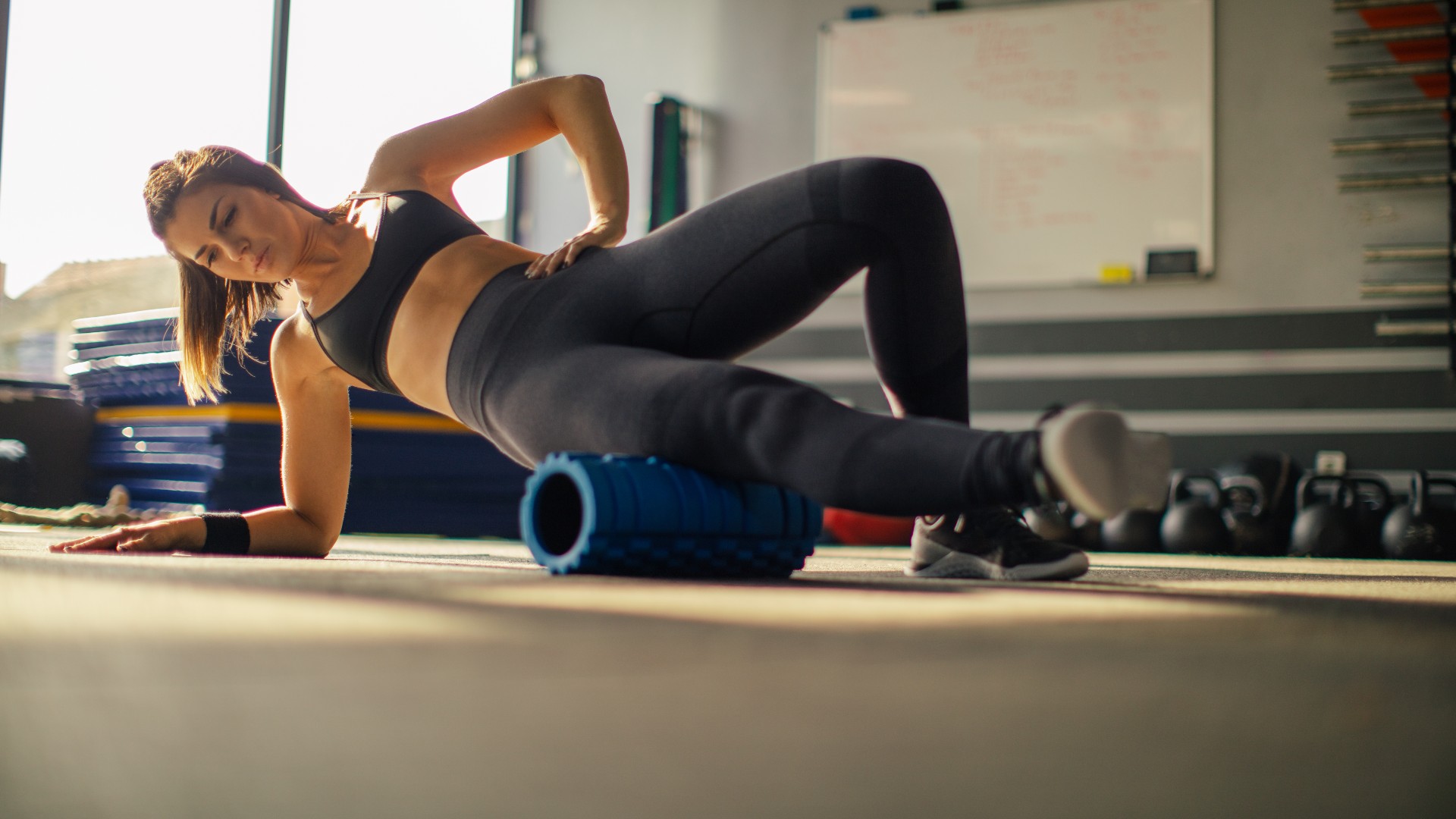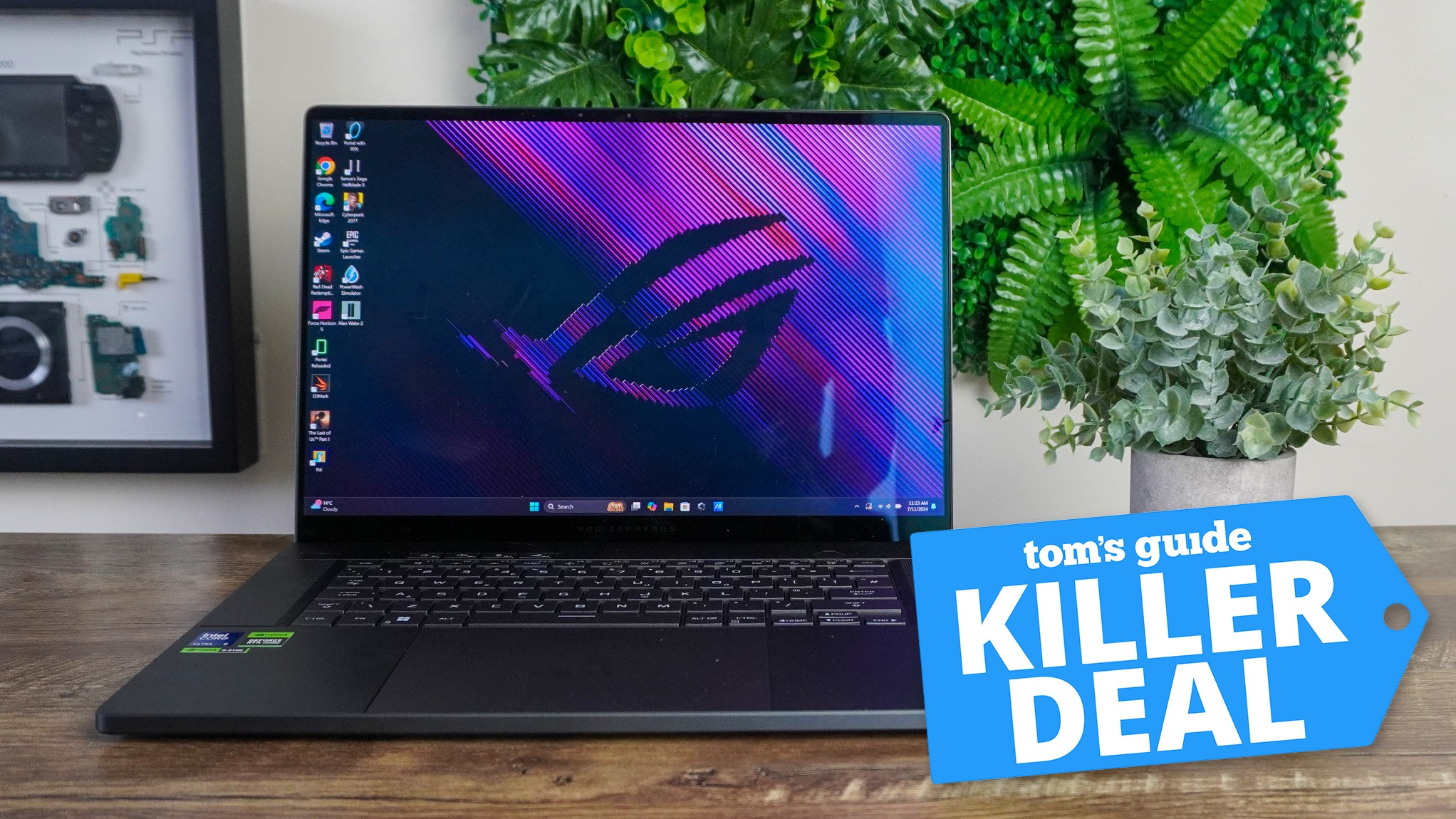
You don’t need to be the proud owner of a foam roller to try this six-minute foam roller routine that helps release muscle tension and improves recovery. Grab a tennis ball, barbell, or anything sturdy that rolls, and one of the best yoga mats to support your body, and have at it.
This lower-body routine is the creation of Soheil Var, who offers a quick and effective muscle recovery routine to loosen up muscle tension and keep your body active. Whether you get your kicks from a strength training program, running, or yoga, a regular recovery routine could help improve posture, range of motion, and performance.
Foam rolling is a myofascial release method that helps to release tight fascia — connective tissue that wraps around and supports muscles, tendons, joints, bones, and tissues — helping to relieve sore muscles and improve your range of motion. And even six minutes before or after exercise could improve your workouts. If you fancy rolling that dreaded next-day DOMS away — grab one of the best foam rollers, hit your mat, and press play on this six-minute foam roller routine suitable for beginners and regular exercisers.
Foam roller benefits
Even the best foam roller exercises divide exercisers into two groups — those willing to embrace the pain and those who avoid it at all costs. Granted, foam rolling isn’t what anyone could consider ‘fun.’ But it’s a necessary evil designed to release tightness in the muscles and connective tissue and increase mobility, blood flow, and oxygen delivery.
According to the Mayo Clinic, the manual therapy technique focuses on relieving pain arising from myofascial tissue — the tough membranes that "wrap, connect, and support your muscles." Tight areas that feel stiff could be restricting movement and adding to muscle pain, which could be released by trying foam roller stimulation.
Foam rollers come in various materials and sizes, but you could also use a trigger ball or makeshift foam roller to access foam rolling benefits without the kit. Whatever you use, the device acts as a communication device between your nervous system and muscles by telling your nervous system that everything is safe so that your muscles can respond by relaxing.
According to the Cleveland Clinic, healthy fascia allows your muscles to contract and stretch and helps muscles, organs, and joints to move without friction, providing your body with strength and stability. "When your fascia is healthy, it’s flexible and stretches with you. When your fascia tightens up, it can restrict movement and cause painful health conditions."
Sign up to get the BEST of Tom's Guide direct to your inbox.
Get instant access to breaking news, the hottest reviews, great deals and helpful tips.
A regular myofascial release should help improve the overall strength, mobility, and quality of your functional movements, but it’s not that enjoyable — depending on who you ask.
Watch Soheil Var’s six-minute foam roller exercise routine to build stronger muscles and release tension
This is a lower-body foam roller routine, so the focus will be on releasing your hip flexors, quads, hamstrings, glutes, and calves. You’ll practice active foam rolling for 25 seconds and transition for five seconds. Resist the temptation to only roll up and down — one big muscle group comprises many smaller muscles.
Take your quads, for example. This muscle group is made up of four individual muscles: the rectus femoris, vastus lateralis, vastus medialis, and vastus intermedius, with their own origin and insertion points. So remember to give your inner and outer legs and glutes some love by rolling these out too. You’ll notice Var moving in a slightly circular motion, which helps to target the muscles more evenly.
If you suffer from tight muscles and limited mobility, this routine will feel uncomfortable. But try to differentiate between pain and temporary discomfort. I regularly tell clients that stretching difficult areas can feel yucky (that's pretty much the best way to describe it) and some people could even feel emotional. Releasing stored stress can make your body want to back away, say goodbye, and move on ASAP.
In these tense moments, practice coming back to your breath. Take a deep inhale through your nose, and as you exhale through your mouth, allow muscles to melt into your foam roller. If an area feels tight, hold your foam roller here for longer and spend time moving the roller in different directions — just like you’d iron out creases in a shirt. If you have a firm foam roller, this might feel more intense, so try and move slowly.
The quads are arguably the most sensitive to foam roll. Again, move slowly and pop one leg down for support, using the video above as guidance and adapting to suit your ability level. If you experience sharp pain, stop immediately and seek advice from a medical professional.
For more recovery ideas, I tried stretching with StretchLab to boost flexibility and build strength all over, and here’s what happened. Tight shoulders? I swear by these 5 stretches to relieve pain and build strength, and if you prefer to recover without equipment, put down your foam roller, these 3 assisted stretches develop flexibility and strength without equipment.

Sam Hopes is a level 3 qualified trainer, a level 2 Reiki practitioner and fitness editor at Tom's Guide. She is also currently undertaking her Yoga For Athletes training course.
Sam has written for various fitness brands and websites over the years and has experience across brands at Future, such as Live Science, Fit&Well, Coach, and T3.
Having coached at fitness studios like F45 and Virgin Active and personal trained, Sam now primarily teaches outdoor bootcamps, bodyweight, calisthenics and kettlebells.
She also coaches mobility and flexibility classes several times a week and believes that true strength comes from a holistic approach to training your body.
Sam has completed two mixed doubles Hyrox competitions in London and the Netherlands and finished her first doubles attempt in 1:11.
